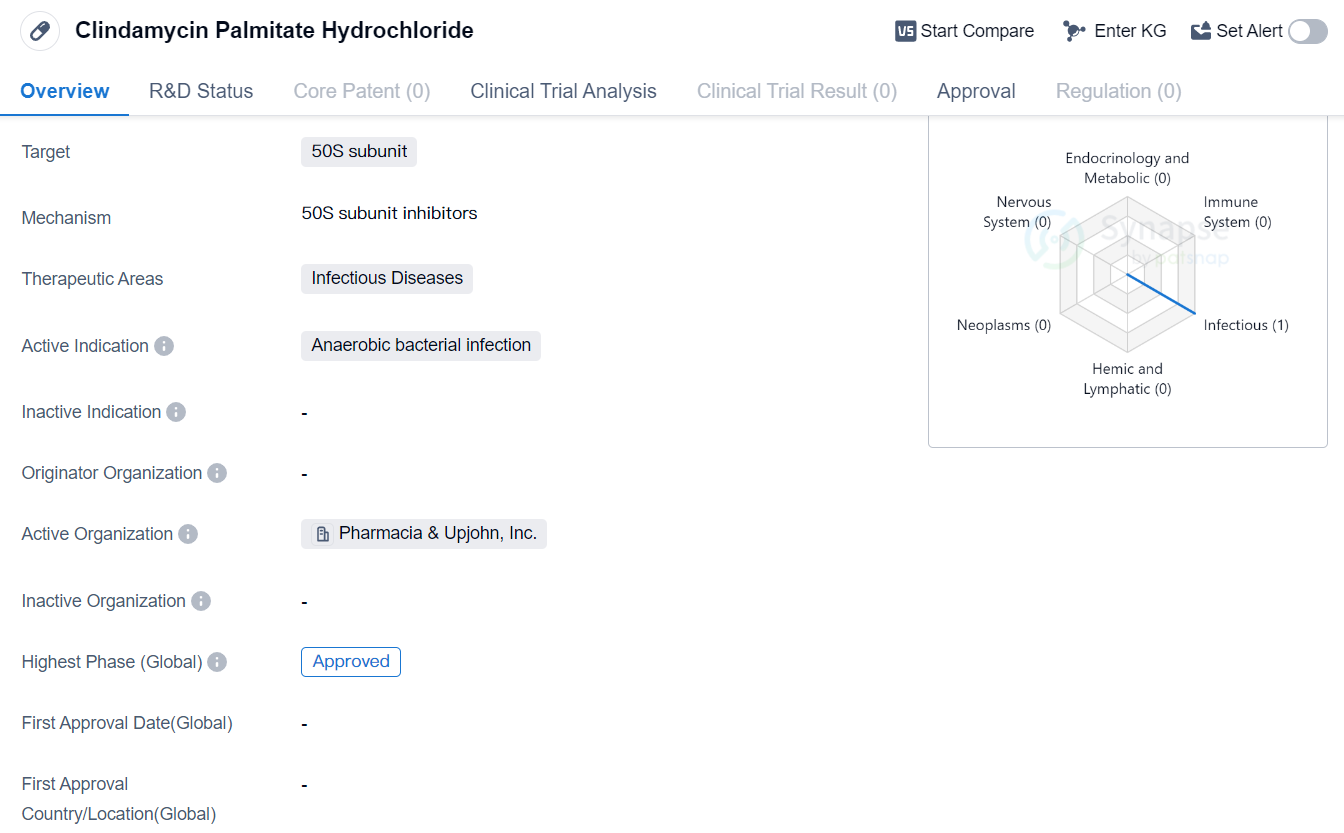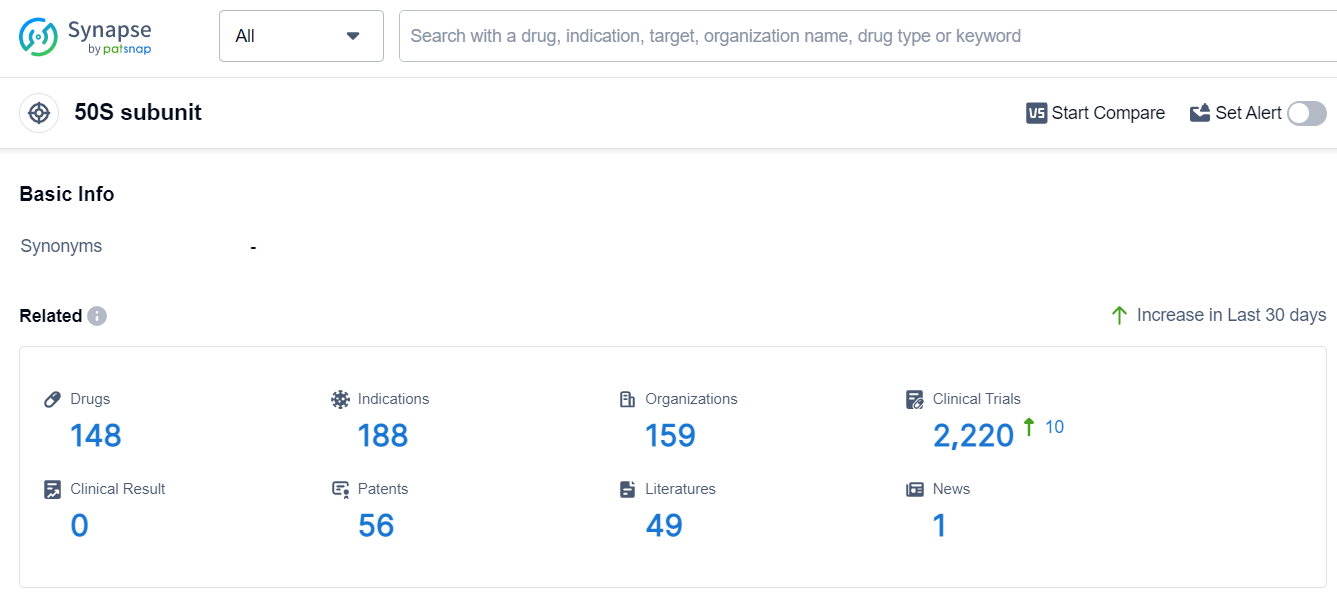A Comprehensive Review of Clindamycin Palmitate Hydrochloride's R&D Innovations
Clindamycin Palmitate Hydrochloride's R&D Progress
Clindamycin Palmitate Hydrochloride is a small molecule drug that targets the 50S subunit. It falls under the therapeutic area of Infectious Diseases and is specifically indicated for the treatment of anaerobic bacterial infections.In terms of its development, Clindamycin Palmitate Hydrochloride has reached the highest phase of development which is approved globally.
As a small molecule drug, Clindamycin Palmitate Hydrochloride is designed to interact with specific targets within the 50S subunit. This mechanism of action allows it to effectively inhibit the growth and replication of anaerobic bacteria, which are known to cause various infectious diseases.
The therapeutic area of Infectious Diseases encompasses a wide range of conditions caused by pathogenic microorganisms. Anaerobic bacterial infections, specifically, are caused by bacteria that can survive and thrive in environments with little to no oxygen. These infections can occur in various parts of the body, including the skin, respiratory tract, and gastrointestinal tract.
The approval of Clindamycin Palmitate Hydrochloride in the global markets highlights its potential as a valuable treatment option for anaerobic bacterial infections.
👇Please click on the image below to directly access the latest data (R&D Status | Core Patent | Clinical Trial | Approval status in Global countries) of this drug.
Mechanism of Action for Clindamycin Palmitate Hydrochloride: 50S subunit inhibitor
From a biomedical perspective, 50S subunit inhibitors are a type of drugs that target the 50S subunit of bacterial ribosomes. Ribosomes are essential cellular structures responsible for protein synthesis. In bacteria, ribosomes consist of two subunits, the 30S subunit and the 50S subunit. The 50S subunit inhibitors specifically bind to the 50S subunit, disrupting the bacterial protein synthesis process.
By inhibiting the 50S subunit, these drugs prevent the formation of functional ribosomes, leading to the inhibition of bacterial growth and replication. They interfere with the proper assembly of amino acids into proteins, ultimately causing bacterial cell death.
Examples of 50S subunit inhibitors include antibiotics such as macrolides (e.g., erythromycin, azithromycin), lincosamides (e.g., clindamycin), and streptogramins (e.g., quinupristin/dalfopristin). These drugs are commonly used in the treatment of various bacterial infections, including respiratory tract infections, skin infections, and certain sexually transmitted diseases.
It is important to note that 50S subunit inhibitors specifically target bacterial ribosomes and are not effective against infections caused by viruses or fungi. Additionally, the use of these drugs should be carefully monitored to prevent the development of antibiotic resistance.
Drug Target R&D Trends for Clindamycin Palmitate Hydrochloride
The analysis of the target 50S subunit reveals a competitive landscape with multiple companies focusing on its development. Pfizer Inc. leads in terms of the highest stage of development, with several approved drugs. Bacterial Infections is the most common indication for drugs targeting the 50S subunit. Small molecule drugs are progressing rapidly, indicating intense competition around innovative drugs. China, the United States, and Japan are the countries with the fastest development, with China showing significant progress. Overall, the target 50S subunit presents opportunities for further research and development in the pharmaceutical industry.
According to Patsnap Synapse, as of 17 Sep 2023, there are a total of 148 50S subunit drugs worldwide, from 159 organizations, covering 188 indications, and conducting 2220 clinical trials.
Please click on the picture link below for free registration or log in directly if you have a freemium account, you can browse the latest research progress on drugs, indications, organizations, clinical trials, clinical results, and drug patents related to this target
Conclusion
In conclusion, Clindamycin Palmitate Hydrochloride is a small molecule drug that targets the 50S subunit and is indicated for the treatment of anaerobic bacterial infections. Its approval in the global markets underscores its potential as an effective therapeutic option in the field of Infectious Diseases.






